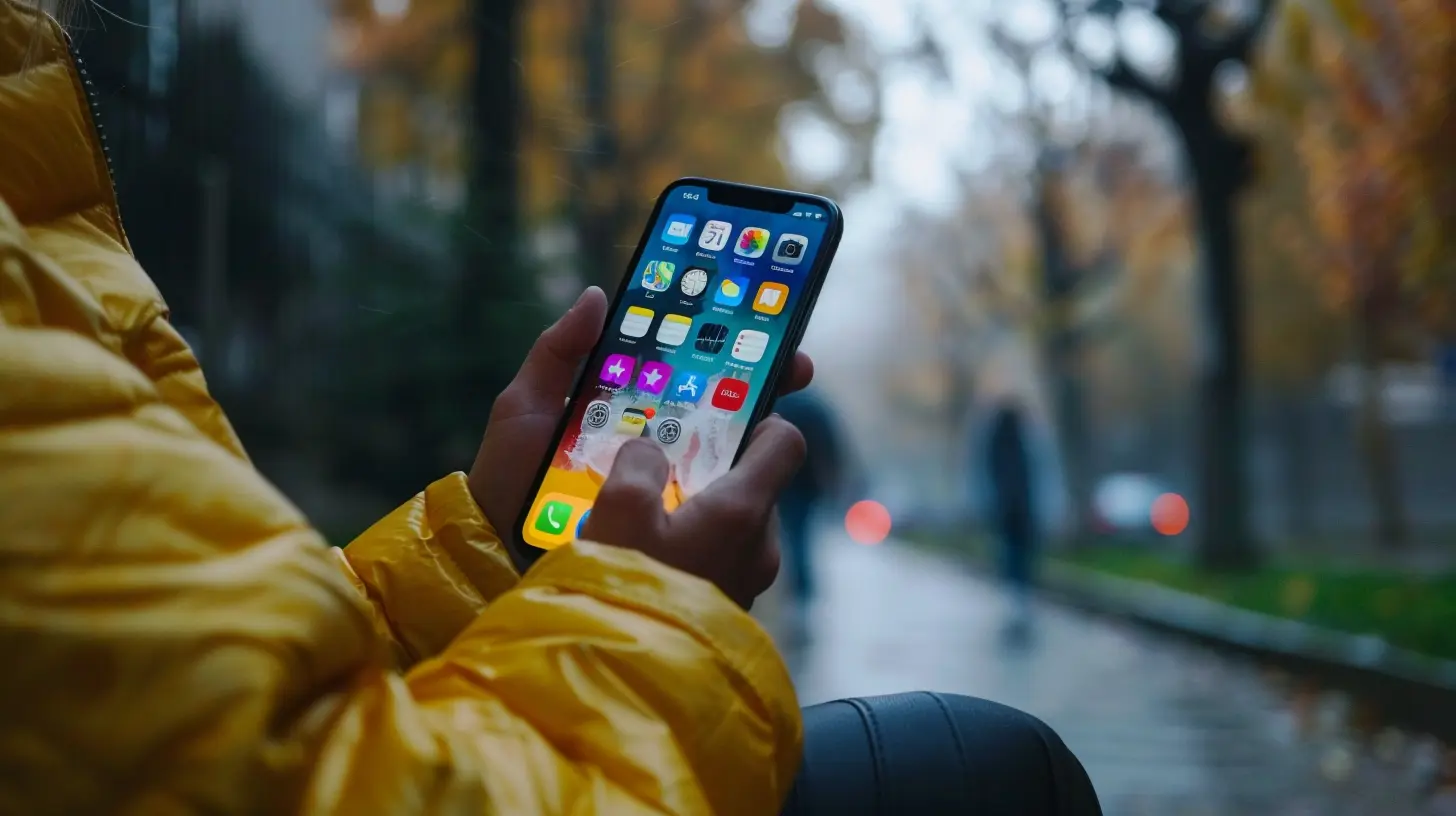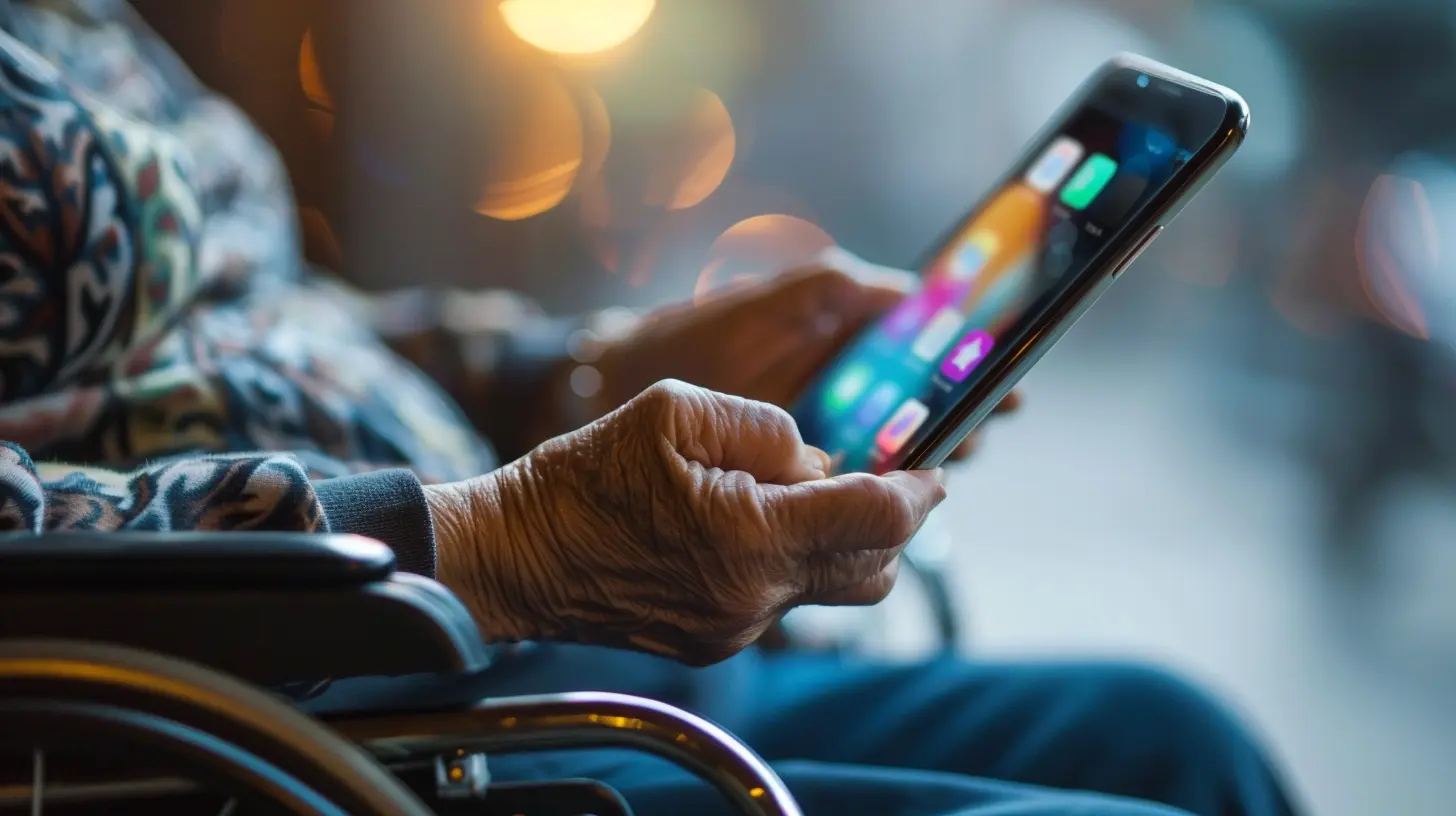The Importance of Accessibility in Mobile App Development
10 August 2025
Mobile apps have become essential to our daily lives as we use them for everything—from ordering food to managing finances, and even staying in touch with loved ones. But here's a question: how often do we think about whether all those apps are accessible to everyone?
Not everyone has the same physical abilities or access to technology, and this is where accessibility comes into play. In mobile app development, accessibility is often the unsung hero that ensures everyone, regardless of disability or limitation, can use an app with ease. But why is it so important? Let's dive in and explore.

What Is Accessibility in Mobile App Development?
Accessibility in mobile app development refers to designing and building apps in a way that people with disabilities or impairments can use them without barriers. This includes people who may have visual, auditory, cognitive, or motor disabilities. Ensuring accessibility means creating apps that are inclusive, providing equal access to all users, regardless of their abilities.Think of accessibility as the digital equivalent of ramps and elevators in a building. Just as those physical accommodations help people with mobility challenges navigate a space, accessibility features in apps help people with disabilities interact with digital content.
Types of Disabilities to Consider
When we talk about accessibility, it's not a one-size-fits-all approach. Different disabilities require different considerations. Here are the main types:- Visual Impairments: This includes total blindness, partial blindness, or color blindness.
- Hearing Impairments: Users who are deaf or hard of hearing.
- Motor Disabilities: Users with conditions like cerebral palsy or arthritis may have difficulty with fine motor skills.
- Cognitive Disabilities: Conditions like dyslexia, ADHD, or learning disabilities may affect how users process information.

Why Accessibility in Mobile App Development Is Crucial
1. It’s About Inclusivity
First and foremost, accessibility is about inclusivity. The world is diverse, and so are the people who live in it. According to the World Health Organization (WHO), over 1 billion people—about 15% of the global population—live with some form of disability. That’s a staggering number. Imagine if your app isn't accessible—you're automatically excluding a significant chunk of potential users.By considering accessibility, you're ensuring that your app can be used by anyone, not just a select group of people. It’s not just about doing the right thing; it’s also about creating a better experience for all users.
2. Legal Requirements and Compliance
There’s another big reason to care about accessibility in mobile apps: the law. In many countries, there are legal requirements for digital accessibility. For example, in the United States, the Americans with Disabilities Act (ADA) mandates that digital services, including mobile apps, must be accessible to people with disabilities. Similarly, the European Accessibility Act sets standards for accessibility in the European Union.Failure to comply with these laws can lead to lawsuits, fines, and damage to your brand’s reputation. You don’t want your app to go viral for all the wrong reasons, right?
3. Improved User Experience
Here’s the thing about accessibility: it doesn’t just benefit people with disabilities—it benefits everyone. Features like voice control, screen readers, and larger text sizes can be useful for people without disabilities as well.For instance, think about closed captions on videos. While they’re essential for users who are deaf or hard of hearing, they can also be useful for people in noisy environments or those who prefer to watch videos with the sound off. By making your app more accessible, you’re actually enhancing the user experience for all users.
4. Expanding Your User Base
Accessible apps have the potential to reach a much larger audience. By ignoring accessibility, you’re alienating a significant portion of potential users. And let's be honest—more users mean more downloads, more engagement, and ultimately, more revenue.In a highly competitive app market, accessibility can be a key differentiator. Companies that prioritize accessibility show that they care about their users, which can foster loyalty and positive word-of-mouth.
5. SEO Benefits
Wait, accessibility and SEO? Yup, you heard that right. Accessibility can actually have a positive impact on your app’s visibility in search engines. Many best practices for accessibility, like using alt text for images and clear, descriptive labels for buttons, also align with SEO best practices.When your app follows accessibility guidelines, it’s easier for search engines like Google to understand your content, which can lead to better rankings. So not only are you making your app more user-friendly, but you’re also boosting its discoverability in search results.

Key Accessibility Features Every App Should Have
So, how do you go about making your mobile app accessible? It’s all about incorporating the right features. Here are some of the most important accessibility features to consider:1. VoiceOver and Screen Readers
For users with visual impairments, screen readers like VoiceOver (iOS) and TalkBack (Android) are crucial. These tools read aloud the content on the screen, allowing users to navigate the app without needing to see it.To make your app compatible with screen readers, you need to ensure that every UI element (buttons, icons, images, etc.) is labeled properly with descriptive text. This way, the screen reader can accurately describe what’s on the screen to the user.
2. High Contrast Mode and Customizable Text
For users with low vision or color blindness, the ability to adjust the contrast or text size can make a world of difference. Offering a high contrast mode ensures that text and other elements are easily distinguishable. Similarly, allowing users to increase the text size ensures they can read content without straining their eyes.3. Closed Captions and Transcripts
For users who are deaf or hard of hearing, offering closed captions for video content is essential. Additionally, providing transcripts for audio content ensures that these users can access the same information as everyone else.4. Touch Target Size
For users with motor disabilities, small buttons or icons can be difficult to tap accurately. Ensuring that touch targets are large enough can make a big difference. The general rule is that touch targets should be at least 44x44 pixels to ensure they’re easy to tap.5. Keyboard Navigation
Some users may rely on external keyboards to navigate through apps, especially those with motor impairments. Ensuring that your app is fully navigable via keyboard shortcuts or tabbing through elements is crucial for accessibility.6. Audio Descriptions
For video content, providing audio descriptions that narrate what’s happening on-screen can help users with visual impairments follow along. Audio descriptions add context to the visual elements and make the content more inclusive.
Tools for Testing Accessibility
You might be wondering how to test your app for accessibility. Thankfully, there are several tools available that can help you identify and fix accessibility issues:- Apple’s Accessibility Inspector: A built-in tool for testing accessibility on iOS devices.
- Google Accessibility Scanner: A free tool for Android that scans your app and suggests improvements.
- WAVE: A web accessibility evaluation tool that checks websites and mobile apps for accessibility issues.
- Lighthouse: Google’s open-source tool that audits your app for performance, SEO, and accessibility.
Using these tools, you can identify areas where your app may be falling short and make the necessary improvements.
Accessibility Is a Journey, Not a Destination
It’s important to remember that accessibility is not a one-time task—it’s an ongoing process. As you update your app or add new features, you need to keep accessibility in mind. Regular testing and user feedback are essential to ensure that your app remains accessible to all users.Additionally, don’t be afraid to engage with the community. People with disabilities are often happy to provide feedback and share their experiences. By involving them in the development process, you can gain valuable insights that will help you create a truly accessible app.
Conclusion
Accessibility in mobile app development is not just a "nice-to-have" feature—it's a must. It's about inclusivity, legal compliance, improving the user experience, expanding your user base, and even gaining SEO benefits. By creating apps that are accessible to everyone, you're not only doing the right thing, but you're also setting yourself up for success in the competitive app market.So, the next time you're working on a mobile app, ask yourself: is it accessible to everyone? Because in the end, accessibility is not just about reaching more users; it’s about empowering all users to engage with your app in the most meaningful way.
all images in this post were generated using AI tools
Category:
App DevelopmentAuthor:

Michael Robinson
Discussion
rate this article
1 comments
Uma McCullough
Accessibility in mobile app development isn't just a feature—it's a fundamental right. Let's build inclusive technology for everyone, everywhere!
August 22, 2025 at 3:49 AM

Michael Robinson
Absolutely! Accessibility is essential for creating inclusive mobile experiences that empower all users. Let's prioritize it in our designs!


